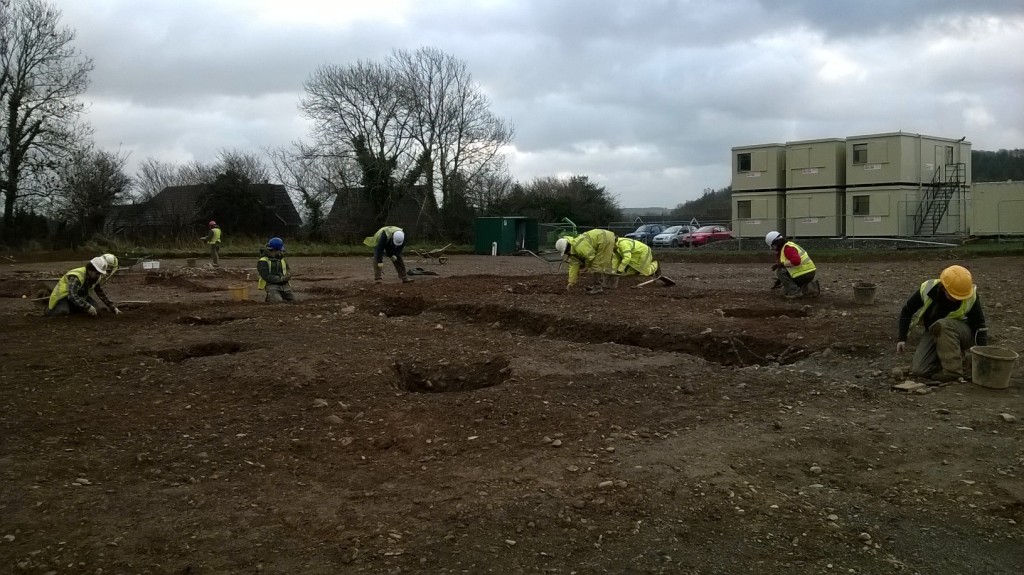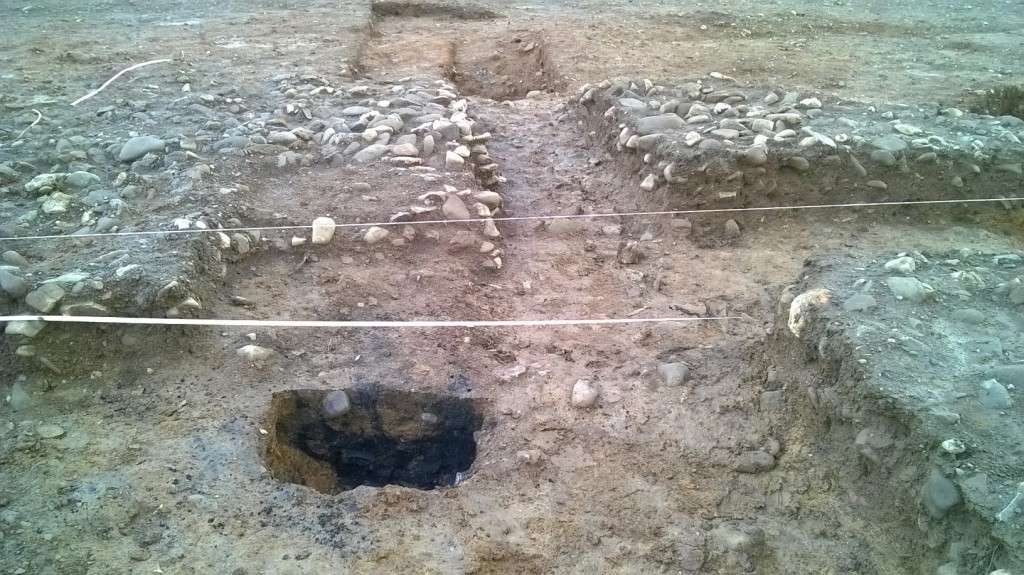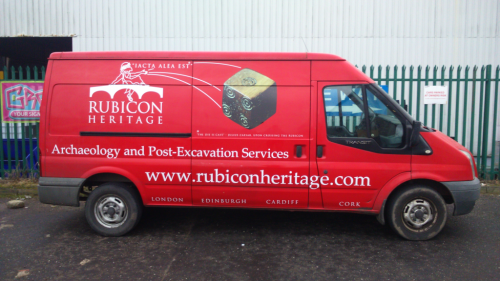In November and December 2015 we had an opportunity to excavate an intriguing site at The Limes, Travellers Rest, Carmarthen. The work was undertaken on behalf of Persimmon Homes. Previous work at the site by Dyfed Archaeological Trust had revealed evidence for prehistoric activity from the Neolithic and Bronze Age periods in the form of pottery and burial mounds. The Rubicon excavations revealed a number of prehistoric areas of interest, including three barrows and associated pits and two-post built structures.

Barrows are monuments that consist of circular ditches constructed around mounds of earth or stone (the barrow). Cremated human remains were buried in these monuments often in pits in (or beneath) the mound, or in the ditch surrounding it.
All three of the barrows we excavated exhibited the classic circular ditch, surrounding a central mound, which partially survived. Two of them contained centrally-located pits with human cremations in evidence, interred in urns of probable Middle Bronze Age date. Although the third did not share this trait, though there were five small satellite pits to the east of the barrow, three of which were certainly human cremation burials. One of the other pits also produced a worked flint tool, one of only two recovered on the site.

In addition to the barrows, two post built structures were also identified. The first was made up of eight small post holes which formed a roughly rectangular plan, initially interpretred as a short-lived temporary structure possibly associated with the burial activity to the west, such as a platform for laying out the dead. Further to the south were the remains of eight small post-holes arranged in a curvilinear pattern. Heavily plough damaged, there may orginally have been a number of other such post-holes. Preliminary interpretation is that these may have formed part of a screening-fence associated with the burial activity.
We are now in the midst of the post-excavation phase of this project, where specialist analysis and detailed interpretation should reveal much more about this site, particularly the Middle to Late Bronze Age funerary landscape which emerged during excavation. We hope to bring further updates over the next few months.


